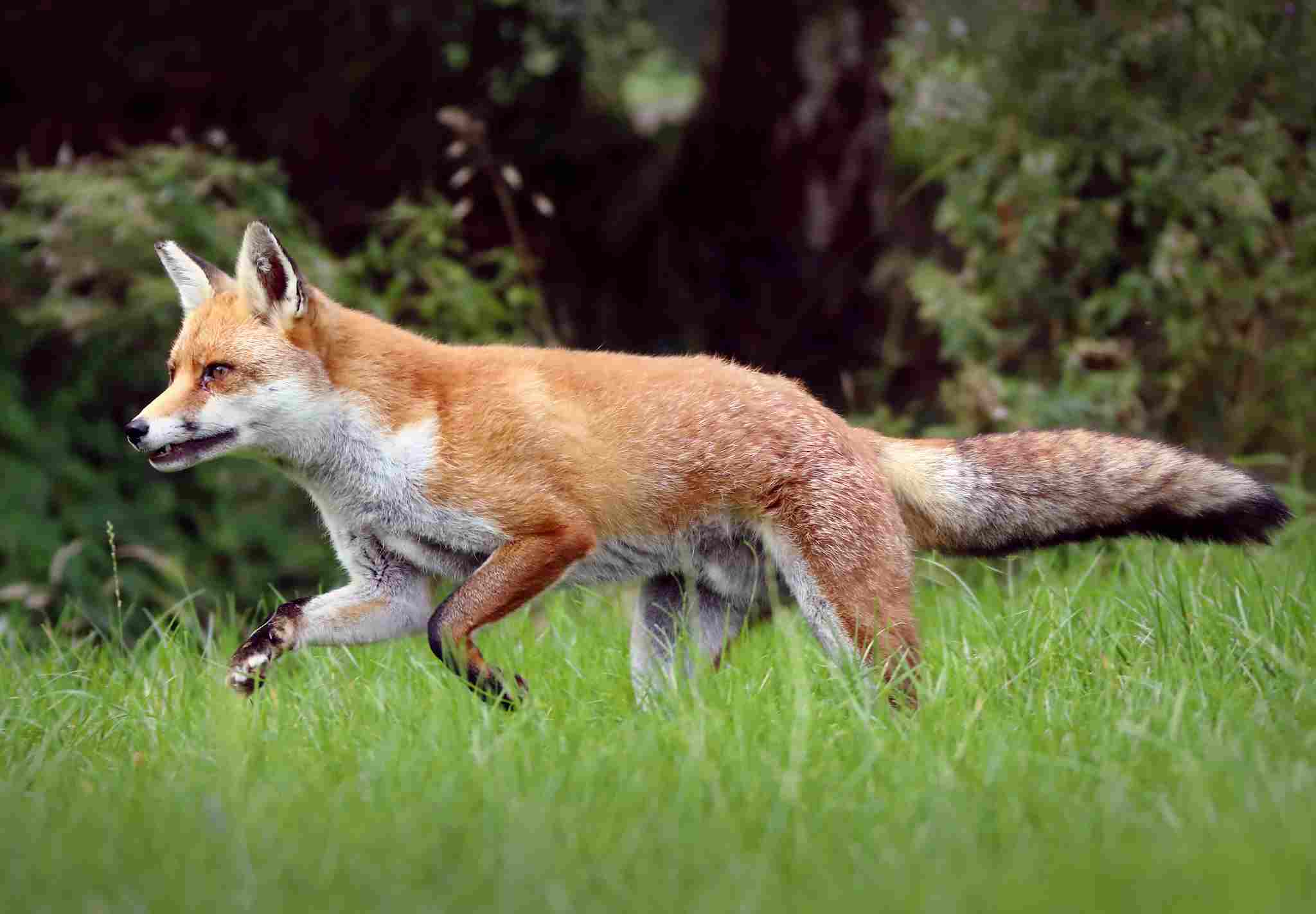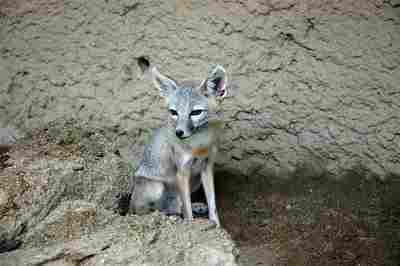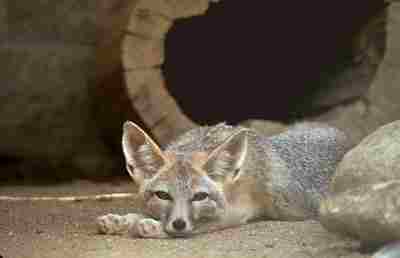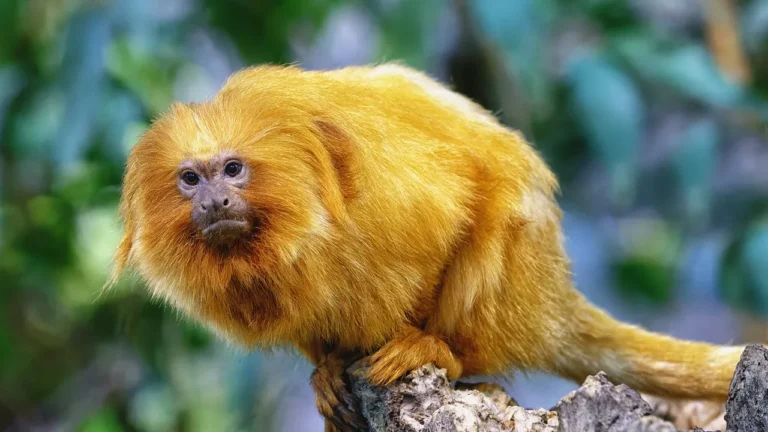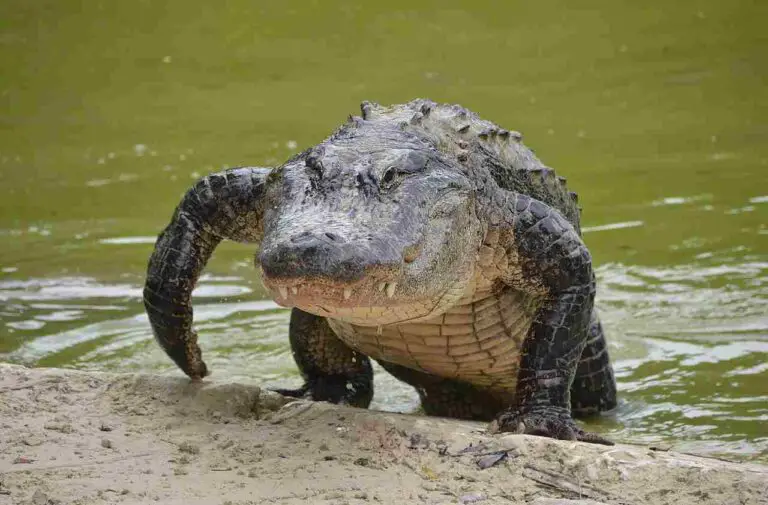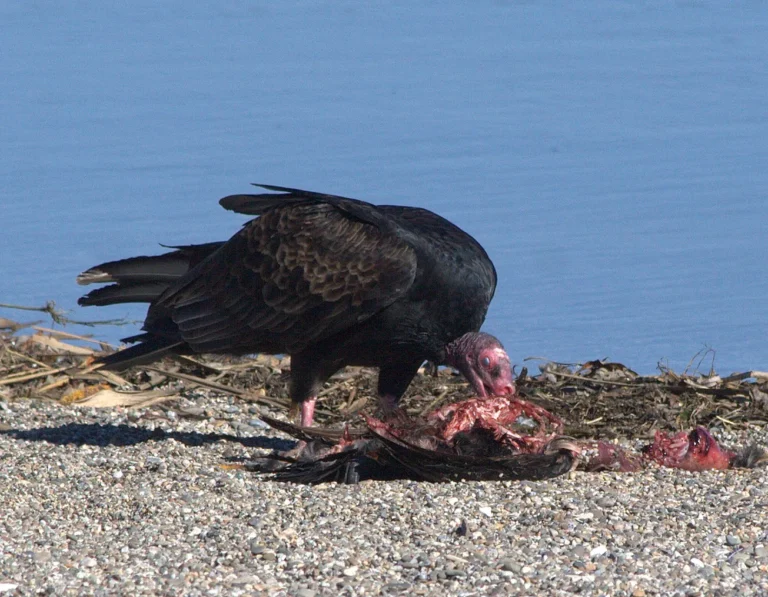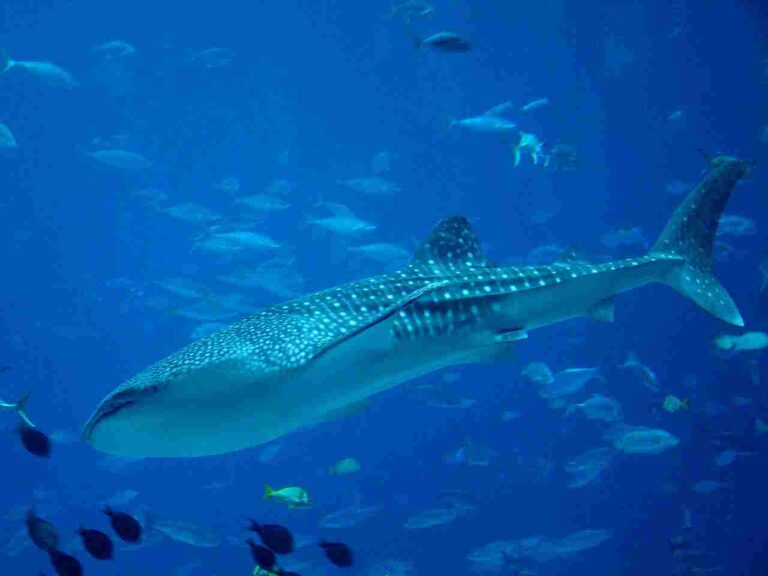Is a Fox a Consumer? Analyzing the Consumer Status and Role of Foxes
A fox is a consumer in the ecosystem because it survives by feeding on other organisms, and is incapable of producing its own food like producers.
This article discusses the status and role of a fox as a consumer.
Is a Fox a Consumer or Producer?
A fox is a consumer, rather than a producer; as it has no chlorophyllous pigmentation, and is incapable of manufacturing its own food through photosynthesis.
An example of an organism that is capable of doing this is grass, which a producer.
expand please. do not include more than three sentences per paragraph
Reasons Why the Fox is Not a Producer
1. Foxes have No Chlorophyllous Pigmentation
One of the reasons why foxes are not considered producers is that they lack chlorophyllous pigmentation. Chlorophyll is the green pigment found in plants that allows them to carry out photosynthesis, the process by which they convert sunlight into energy. Without chlorophyll, foxes are unable to produce their own food through photosynthesis like plants do.
Unlike plants, foxes are heterotrophs, which means they rely on consuming other organisms for their energy needs. They are part of the consumer category in the food chain, specifically as secondary consumers. This distinction is important because it highlights the different roles that organisms play in an ecosystem.
While plants, as producers, are able to synthesize their own food, foxes must obtain their energy by consuming other organisms. This makes them consumers in the food chain, as they rely on the energy stored in the bodies of their prey. Foxes are known for their omnivorous diet, which includes small mammals, birds, insects, fruits, and even carrion.
Without the ability to produce their own food, foxes have evolved to be efficient hunters and scavengers. They possess sharp teeth and claws, as well as keen senses, which allow them to locate and capture their prey. Their diet consists of a variety of organisms, both plant and animal, depending on what is available in their environment.
Therefore, foxes are not considered producers because they lack chlorophyllous pigmentation and cannot carry out photosynthesis. Instead, they rely on consuming other organisms for their energy needs, making them consumers in the food chain. Their omnivorous diet and hunting abilities have allowed them to adapt and thrive in various environments.
2. Consumption of Other Organisms is the Primary Means of Energy Acquisition for Foxes
Consumption of other organisms is the primary means of energy acquisition for foxes. Unlike plants, which can produce their own food through photosynthesis, foxes rely on consuming other organisms to meet their energy needs. This makes them consumers in the food chain, specifically as secondary consumers.
Foxes have evolved to be efficient hunters and scavengers, using their sharp teeth and claws, as well as their keen senses, to locate and capture their prey. Their diet consists of a variety of organisms, both plant and animal, depending on what is available in their environment. This omnivorous diet includes small mammals, birds, insects, fruits, and even carrion.
By consuming other organisms, foxes obtain the energy stored in the bodies of their prey. This energy is then used for various physiological processes, such as growth, reproduction, and maintaining body temperature. Without the ability to produce their own food, foxes have become highly adapted to their role as consumers in the food chain.
Consuming other organisms as the primary means of energy acquisition is a characteristic shared by many animals in the natural world. It allows for the transfer of energy from one organism to another, creating a complex web of interactions within ecosystems. Foxes play an important role in regulating populations of their prey species, helping to maintain the balance of the ecosystem.
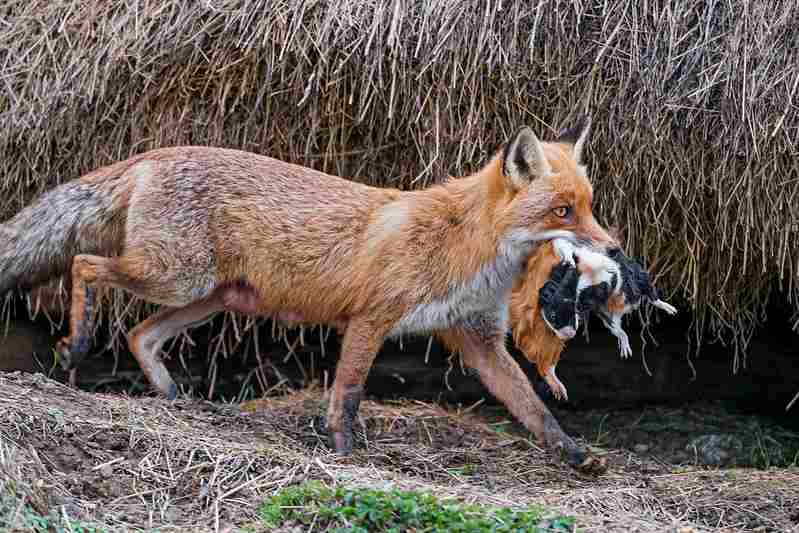
3. Foxes Do Not Possess the Typical Physiological Features of Producers
Foxes do not possess the typical physiological features of producers, such as leaves and roots. Unlike plants, which have chlorophyllous pigmentation and can convert sunlight into energy through photosynthesis, foxes lack these characteristics. This is one of the reasons why foxes cannot be classified as producers in the food chain.
Producers, such as plants, algae, and some bacteria, are able to synthesize their own food using sunlight, water, and carbon dioxide. They have specialized structures, like leaves and roots, that enable them to carry out photosynthesis and produce glucose, which serves as their source of energy. Foxes, on the other hand, do not possess these structures or the ability to produce their own food.
Instead, foxes rely on consuming other organisms for their energy needs. They are classified as consumers in the food chain because they obtain their energy by feeding on other organisms. This makes them dependent on the energy stored in the bodies of their prey.
The absence of chlorophyllous pigmentation and the inability to carry out photosynthesis are key factors that differentiate foxes from producers. While producers can generate their own energy from sunlight, foxes must obtain energy from external sources. They have evolved as predators and scavengers, adapting their hunting and feeding behaviors to acquire the necessary energy from other organisms.
What Type of Consumer is a Fox?
A fox is a secondary consumer in most ecosystems where it is found. This is because the prey of foxes are mostly small primary consumers like squirrels and rabbits. As a secondary consumer, foxes occupy an important position in the food chain, playing a crucial role in regulating the population of their prey and maintaining the balance of the ecosystem.
Foxes are opportunistic predators, meaning they have a diverse diet and can consume a variety of organisms. While they primarily feed on small mammals like rodents, they are also known to eat birds, reptiles, amphibians, and even insects. This versatility in their diet allows them to adapt to different environments and ensures their survival even when their preferred prey is scarce.
The fact that foxes primarily feed on small primary consumers distinguishes them as secondary consumers. Primary consumers, also known as herbivores, feed directly on producers such as plants and algae. However, foxes do not rely solely on plant matter for their energy needs. Instead, they obtain their energy by consuming other animals, which places them in the secondary consumer category.
Being a secondary consumer has its advantages for foxes. By feeding on primary consumers, they indirectly benefit from the energy stored in the bodies of these organisms. This allows foxes to obtain a higher concentration of energy compared to primary consumers, as energy is transferred and accumulated through the food chain. As a result, foxes can sustain their energy requirements and maintain their population size.
In addition to their role as secondary consumers, foxes also contribute to the ecosystem as predators. By preying on small mammals, they help control their population and prevent overgrazing or overpopulation. This, in turn, has a cascading effect on the entire ecosystem, influencing the abundance and distribution of other species.
Is a Fox a Primary Consumer?
No, a fox is not a primary consumer because it does not feed on producers/autotrophs as a sole source of energy and nutrients.
Instead, most foxes are omnivorous (and opportunistic) and can consume both plant and animal matter as part of their diet.
Reasons Why a Fox is Not a Primary Consumer
1. Foxes Do Not Feed Solely On Producers
Foxes do not feed solely on producers, which is one of the reasons why they are not considered primary consumers. While primary consumers primarily consume producers, such as plants and algae, foxes have a more varied diet. They are omnivorous animals, meaning they consume both plant matter and other organisms. This includes small mammals, birds, insects, and even carrion.
By having a diverse diet, foxes are able to obtain a wider range of nutrients and energy sources. This flexibility allows them to adapt to different environments and survive in various habitats. Unlike primary consumers, which rely solely on plant-based food sources, foxes have the ability to consume both plant and animal matter, making them more versatile in their feeding habits.
Furthermore, foxes are opportunistic predators, meaning they take advantage of available food sources. They are known to scavenge for food, including raiding garbage cans or feeding on the remains of other animals. This behavior further highlights their adaptability and ability to consume a variety of food sources.
While foxes may consume some plant matter, their diet is not limited to producers alone. This distinguishes them from primary consumers, which rely heavily on plant-based food sources for their energy needs. Instead, foxes occupy a different ecological niche as omnivorous consumers, capable of consuming both plant and animal matter.
Therefore, one of the reasons why foxes are not considered primary consumers is because they do not feed solely on producers. Their omnivorous diet, which includes both plant and animal matter, allows them to occupy a different ecological role and adapt to various environments. This versatility in feeding habits sets them apart from primary consumers, which rely primarily on plant-based food sources.
2. Foxes are Omnivorous, Rather than Herbivorous
Foxes are omnivorous animals, which is another reason why they are not considered primary consumers. Unlike herbivores that solely consume plant matter, foxes have a more varied diet that includes both plant and animal sources. This makes them versatile in their feeding habits and allows them to obtain a wider range of nutrients and energy.
As omnivores, foxes have the ability to consume a variety of food sources. They can feed on small mammals, birds, insects, fruits, berries, and even carrion. This adaptability in their diet enables them to survive in different environments and habitats. They are not limited to relying solely on producers for their energy needs, unlike primary consumers.
The omnivorous nature of foxes also allows them to take advantage of available food sources. They are opportunistic predators, meaning they will consume whatever is readily accessible. This includes scavenging for food, raiding garbage cans, or feeding on the remains of other animals. This behavior further highlights their ability to adapt and thrive in various conditions.
By being omnivorous, foxes occupy a different ecological niche compared to primary consumers. While primary consumers rely heavily on plant-based food sources, foxes have the flexibility to consume both plant and animal matter. This distinction sets them apart from primary consumers and categorizes them as consumers with a broader dietary range.
3. Many Primary Consumers are Prey for Foxes
Many primary consumers are prey for foxes, which is another reason why foxes are not considered primary consumers. Foxes are opportunistic predators and will often target small mammals, birds, and insects that are classified as primary consumers. By preying on these organisms, foxes obtain their energy and nutrients indirectly from the producers that the primary consumers feed on. This predatory behavior places foxes in the secondary consumer category, as they rely on consuming other consumers rather than directly consuming producers.
The fact that foxes feed on primary consumers highlights their role as predators in the food chain. They occupy a higher trophic level and play a crucial role in regulating the population of primary consumers. By controlling the population of primary consumers, foxes indirectly impact the abundance of producers in the ecosystem. This predator-prey relationship is an essential component of maintaining the balance and stability of the ecosystem.
The consumption of primary consumers by foxes also has implications for energy transfer and nutrient cycling. When foxes consume primary consumers, they obtain the energy and nutrients that were originally derived from producers. This energy transfer occurs through the food chain, with energy being passed from producers to primary consumers and then to secondary consumers like foxes. By consuming primary consumers, foxes contribute to the flow of energy and nutrients through the ecosystem.
In addition to small mammals, birds, and insects, foxes may also prey on other primary consumers such as rabbits and field mice. These animals are important components of the primary consumer community, and their predation by foxes further reinforces the secondary consumer status of foxes. By targeting primary consumers as their prey, foxes demonstrate their position in the food chain and their dependence on consuming other consumers for their energy needs.
Generally, the fact that many primary consumers are prey for foxes solidifies the secondary consumer status of foxes. Their predatory behavior and reliance on consuming other consumers rather than producers distinguish them from primary consumers. By occupying a higher trophic level, foxes play a vital role in regulating the population of primary consumers and contribute to energy transfer and nutrient cycling in the ecosystem.
Is a Fox a Secondary Consumer?
A fox is indeed classified as a secondary consumer in various ecosystems. This means that foxes occupy a trophic level above primary consumers, such as rabbits and field mice. As secondary consumers, foxes play a crucial role in the food chain by feeding on primary consumers and obtaining their energy and nutrients indirectly from producers.
One key reason why foxes are considered secondary consumers is their predatory behavior. They are opportunistic predators that target small mammals, birds, and insects, which are classified as primary consumers. By preying on these organisms, foxes obtain their energy and nutrients from the producers that the primary consumers feed on. This indirect consumption of producers places foxes in the secondary consumer category.
The fact that foxes feed on primary consumers highlights their role as predators in the ecosystem. They occupy a higher trophic level and have a significant impact on regulating the population of primary consumers. By controlling the population of primary consumers, foxes indirectly influence the abundance of producers in the ecosystem. This predator-prey relationship is essential for maintaining the balance and stability of the ecosystem.
In addition to rabbits and field mice, foxes may also prey on other primary consumers, such as insects and birds. These animals are vital components of the primary consumer community, and their predation by foxes further solidifies the secondary consumer status of foxes. By targeting primary consumers as their prey, foxes demonstrate their position in the food chain and their dependence on consuming other consumers for their energy needs.
Therefore, the predatory behavior and reliance on consuming primary consumers distinguish foxes as secondary consumers. They occupy a higher trophic level, regulate the population of primary consumers, and contribute to energy transfer and nutrient cycling in the ecosystem. As secondary consumers, foxes play a vital role in maintaining the balance and functioning of the ecosystem.
Reasons Why a Fox is a Secondary Consumer
1. Foxes Have Predatory Behaviors
Foxes have predatory behaviors, which is one of the reasons why they are classified as secondary consumers. As predators, foxes actively hunt and prey on other animals for their sustenance. They possess the necessary physical adaptations, such as sharp teeth and claws, keen senses, and agility, to successfully capture and kill their prey. This predatory behavior sets them apart from primary consumers, which primarily feed on producers like plants.
By preying on other animals, foxes obtain their energy and nutrients from the consumption of primary consumers. Their diet consists of a variety of small mammals, birds, reptiles, amphibians, and even insects. While they may occasionally consume plant matter, it is not their primary source of sustenance. This carnivorous diet further reinforces their role as secondary consumers in the food chain.
Additionally, the prey of foxes predominantly comprises primary consumers. Small rodents, such as mice and voles, are common targets for foxes. These rodents primarily feed on plants, making them primary consumers. By consuming these primary consumers, foxes occupy a higher trophic level in the food chain, solidifying their position as secondary consumers.
Furthermore, foxes are smaller and less powerful compared to tertiary consumers, such as large predators or apex predators. They are not at the top of the food chain and are often preyed upon by larger predators themselves. This characteristic further supports their classification as secondary consumers.
2. Prey for Foxes Comprise Significantly of Primary consumers
Prey for foxes comprises significantly of primary consumers, which is a key reason why foxes are classified as secondary consumers. When foxes hunt and prey on other animals, they often target small rodents like mice and voles. These rodents primarily feed on plants, making them primary consumers in the food chain. By consuming these primary consumers, foxes occupy a higher trophic level and play a crucial role in regulating the population of these herbivorous animals.
The diet of foxes consists of a variety of small mammals, birds, reptiles, amphibians, and insects. However, the majority of their prey consists of primary consumers. This means that foxes rely heavily on the energy and nutrients obtained from consuming animals that feed directly on producers. Their predatory behavior and preference for primary consumers further solidify their position as secondary consumers in the ecosystem.
By preying on primary consumers, foxes contribute to the balance of the food chain. They help control the population of herbivorous animals, preventing overgrazing and maintaining the health of plant communities. This, in turn, has cascading effects on the entire ecosystem, influencing the abundance and distribution of other organisms.
It is important to note that while foxes primarily consume primary consumers, they are not limited to this food source. They are opportunistic omnivores and can adapt their diet based on availability. This flexibility allows them to survive in various habitats and take advantage of different food resources when necessary.
3. Foxes are Smaller and Less-Powerful Than Tertiary Consumers
Foxes are smaller and less-powerful than tertiary consumers like wolves, which is a reason why a fox is not a primary consumer. Due to their smaller size and relatively lower strength compared to larger predators, foxes are not able to effectively hunt and capture the larger prey that tertiary consumers typically feed on. Instead, foxes primarily target smaller prey such as rodents, birds, and insects, which are more easily within their hunting capabilities. This size and strength limitation restricts foxes from occupying the trophic level of tertiary consumers in most ecosystems.
The smaller size of foxes is a result of their evolutionary adaptations to their environment. Being smaller allows them to be more agile and maneuverable, which is advantageous for hunting smaller prey and navigating through their habitat. However, this smaller size also limits their ability to compete with larger predators for larger prey. Tertiary consumers, on the other hand, are often larger and more powerful, enabling them to successfully hunt and consume larger prey.
In addition to their size, foxes also have relatively lower strength compared to tertiary consumers. This lower strength makes it more challenging for them to overpower and subdue larger prey. Tertiary consumers typically have stronger jaws, sharper teeth, and more robust bodies, which are better suited for capturing and handling larger prey. Foxes, although skilled hunters, are not equipped with the same level of physical attributes as tertiary consumers, further reinforcing their position as secondary consumers in the food chain.
Generally, the smaller size and lower strength of foxes compared to tertiary consumers like wolves contribute to their classification as secondary consumers. While they play an important role in regulating the population of primary consumers, their physical limitations prevent them from occupying the trophic level of tertiary consumers in most ecosystems.
Is a Fox a Tertiary Consumer?
A fox is not a tertiary consumer in most ecosystems where it may be found, such as deserts, temperate deciduous forests, boreal forests, prairies, and tundras. This is primarily due to the presence of larger predators like wolves, cougars, and bears in these ecosystems. These larger predators occupy the trophic level of tertiary consumers and have a significant impact on the food chain dynamics.
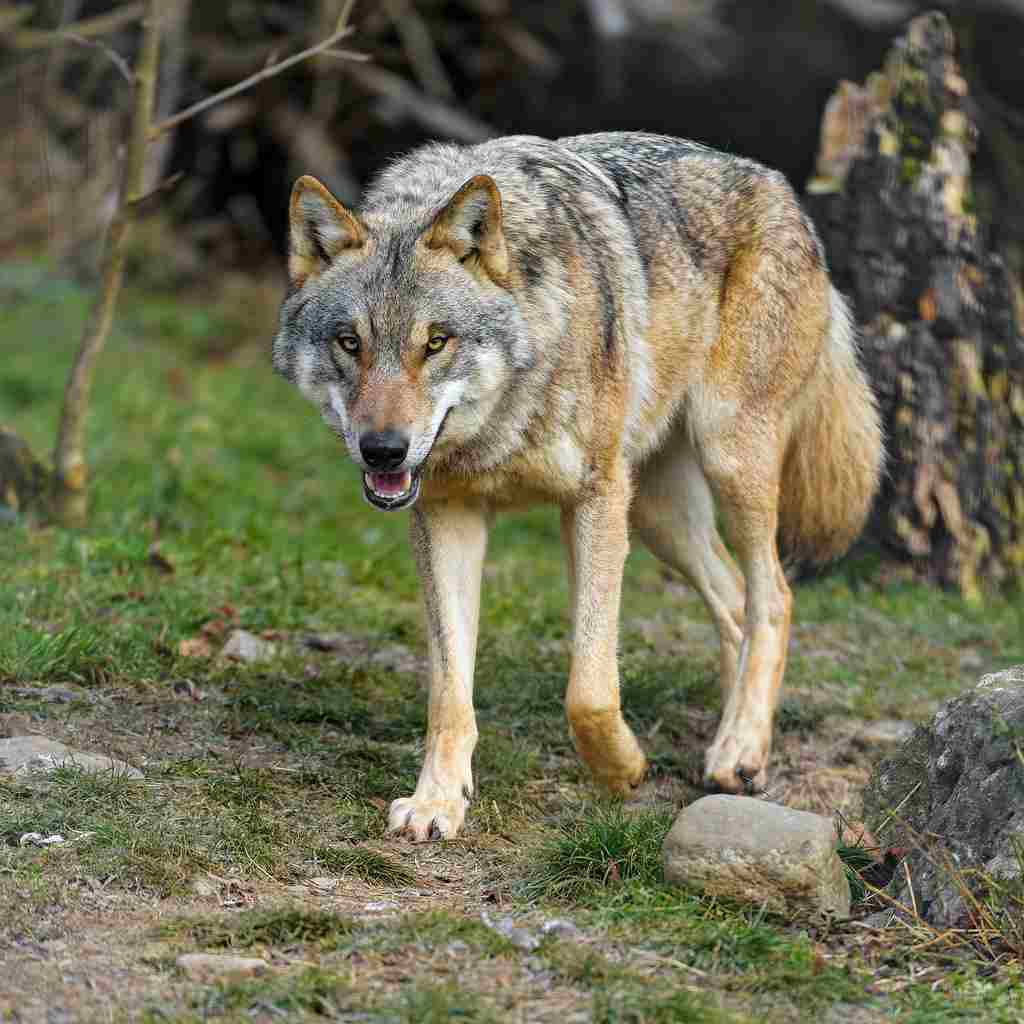
One reason why foxes are not considered tertiary consumers is their smaller size compared to most tertiary consumers. Foxes are relatively small animals, which limits their ability to effectively hunt and capture larger prey. Tertiary consumers, on the other hand, are often larger and more powerful predators that are capable of hunting and consuming larger prey. The smaller size of foxes restricts them to feeding on smaller prey such as rodents, birds, and insects, placing them at a lower trophic level in the food chain.
Another reason why foxes are not classified as tertiary consumers is their relatively low cascading effect on the food chain. Tertiary consumers play a crucial role in regulating the population of primary consumers, which in turn affects the abundance of producers in the ecosystem.
However, the impact of foxes on the population dynamics of primary consumers is not as significant as that of larger predators. While foxes do contribute to controlling the population of smaller prey species, their influence is not as pronounced as that of tertiary consumers higher up in the food chain.
Drawing from the above, a fox is not considered a tertiary consumer in most ecosystems due to its smaller size compared to larger predators and its relatively low cascading effect on the food chain. While foxes play an important role as secondary consumers, their physical limitations and the presence of larger predators prevent them from occupying the trophic level of tertiary consumers. Understanding the consumer status and role of foxes helps to shed light on the intricate dynamics of ecosystems and the interactions between different organisms within them.
FAQs
1. Is a Fox a Primary or Secondary Consumer?
A fox is classified as a secondary consumer rather than a primary consumer. This is because a fox does not solely rely on producers for sustenance. Instead, it consumes a variety of organisms to meet its energy needs.
When considering the consumer status of a fox, it is important to understand the distinction between primary and secondary consumers. Primary consumers, also known as herbivores, primarily feed on producers such as plants and algae. They obtain their energy by consuming these organisms directly. However, a fox is not solely herbivorous and consumes a diverse range of food sources, including both plants and other animals.
Foxes are omnivorous, meaning they have a varied diet that includes both plant matter and other animals. This makes them more adaptable and allows them to obtain energy from different sources. While they may consume some producers, their diet also consists of other organisms, such as small mammals, birds, insects, and fruits. This consumption of both plant and animal matter places them in the category of secondary consumers.
2. Is a Fox an Example of a Primary Consumer?
When considering the consumer status of a fox, it is clear that it is not an example of a primary consumer. As discussed earlier, primary consumers, also known as herbivores, primarily feed on producers such as plants and algae. They obtain their energy by consuming these organisms directly. However, a fox does not solely rely on producers for sustenance.
Foxes are omnivorous, meaning they have a varied diet that includes both plant matter and other animals. This makes them more adaptable and allows them to obtain energy from different sources. While they may consume some producers, their diet also consists of other organisms, such as small mammals, birds, insects, and fruits. This consumption of both plant and animal matter places them in the category of secondary consumers.
Furthermore, the fact that foxes are not solely herbivorous and consume a diverse range of food sources further supports the argument that they are not primary consumers. Primary consumers are characterized by their exclusive reliance on producers for energy, which is not the case for foxes.
3. Is a Fox a Secondary or Tertiary Consumer?
When considering the consumer status of a fox, it is evident that it falls into the category of a secondary consumer. As mentioned earlier, secondary consumers are organisms that primarily feed on primary consumers. They obtain their energy by consuming other animals that feed on producers. In the case of foxes, their diet consists significantly of primary consumers, such as small mammals, birds, and insects.
Foxes exhibit predatory behaviors, actively hunting and capturing their prey. This predatory nature further supports their classification as secondary consumers. They rely on the energy stored in the bodies of the primary consumers they consume, rather than directly obtaining energy from producers.
Additionally, the size and power of foxes compared to tertiary consumers, such as large predators, further solidify their position as secondary consumers. Foxes are smaller and less powerful than animals higher up in the food chain, which limits their ability to prey on larger and more dominant species.
Therefore, a fox is classified as a secondary consumer due to its consumption of primary consumers and its predatory behaviors. It does not solely rely on producers for energy, nor does it possess the characteristics of tertiary consumers. By understanding the consumer status of foxes, we gain insight into their ecological role and their position within the food chain.
4. Is a Fox a Producer, Consumer, or Decomposer?
When examining the role of a fox in the ecosystem, it becomes clear that it falls into the category of a consumer. Unlike producers, such as plants, foxes do not manufacture their own food through photosynthesis. They lack chlorophyllous pigmentation, which is essential for this process. Therefore, they cannot be classified as producers.
Furthermore, foxes do not possess the characteristics of decomposers. Decomposers are organisms that break down dead organic matter, such as plants and animals, into simpler substances. They play a crucial role in nutrient recycling within ecosystems. However, foxes are neither saprophytic nor detritivorous, meaning they do not feed on decaying organic matter.
In summary, a fox is primarily a consumer within the food chain. It obtains its energy by consuming other organisms, particularly primary consumers. This makes it a secondary consumer, as discussed in the previous section. While foxes have predatory behaviors and can be considered carnivores, they do not fit the classification of a producer or decomposer.
5. Is a Fox a Carnivore?
While foxes do exhibit predatory behaviors, they are actually considered omnivores, and not strict carnivores. This is due to their opportunistic nature when it comes to food sources.
As discussed earlier, foxes obtain their energy by consuming other organisms, particularly primary consumers. This means that they feed on a variety of prey, including small mammals, birds, reptiles, insects, and even fruits and vegetables. This diverse diet allows foxes to adapt to different environments and take advantage of available food sources.
While foxes primarily consume animal matter, they are not solely dependent on meat. They have been observed eating berries, nuts, and even grass on occasion. This flexibility in their diet is a characteristic of omnivores, who can derive nutrients from both plant and animal sources.
Conclusion
* In this article, we have explored the consumer status and role of foxes.
* We have discussed why foxes are not considered producers, highlighting their lack of chlorophyllous pigmentation, their reliance on consuming other organisms for energy acquisition, and their physiological features that differ from typical producers.
* We have also examined the type of consumer foxes are, ruling out their classification as primary consumers due to their varied diet and omnivorous nature.
* Additionally, we have explored the reasons why foxes are considered secondary consumers, including their predatory behaviors, their consumption of primary consumers as prey, and their smaller size and lesser power compared to tertiary consumers.
* Finally, we have summarized the key points of each section and provided answers to frequently asked questions about the consumer status of foxes.

